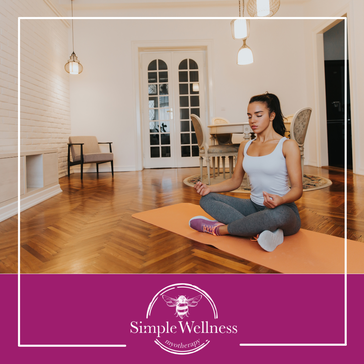 It has been widely accepted and researched that meditation and in particular, mindfulness meditation can have many benefits for stress management and improvements to concentration and focus. Many studies have explored the impacts of long term meditation on the brain. So we know that meditation can change the brain and improve cognitive function and emotional regularity. How about pain management? Can a meditation and mindfulness practice assist with chronic and acute pain conditions? How can you access these benefits through integrating a regular meditation practice into your wellness toolkit? What is Pain? Firstly, it’s important to note that pain has two main elements. Pain consists of a physical sensation, usually described as unpleasant or undesirable, and an emotional response. Whilst you are experiencing pain in your body, a message is sent through nerve fibres through your central nervous system to your brain to signal that there may be damage or threat of damage and this area is in need of protection immediately. There is the other function of the brain that has the power to enhance or reduce the intensity of this experience. Your emotional response. Your brain will attempt to interpret the sensation, often making a quick judgement to be able to respond in the best way to keep you safe from harm. This often happens with very little thought or awareness as your body has been doing this and responding in this way your whole life. It is automatic and unconscious, initiating your fight or flight response. This has kept you safe and works very well for those moments that threaten your safety. So pain has a very important purpose. Once the initial threat has been removed however, we may be left with the emotional response to the lingering effects of whatever damage was sustained from the event. Here is where meditation can become a very useful tool to restore calm to your nervous system by triggering the relaxation response. This is where you rest and digest, and where tissues and structures of your body can receive the natural healing intelligence of your body restoring its internal balance and optimal function. There are different types of pain. There is the obvious “loud” pain and there is the less obvious, dull aches and mild discomfort which can also trigger the emotional response. These more subtle signs and symptoms of pain can be an early warning sign of things being out of balance and not functioning effectively. Overtime, the emotional effects of low grade chronic pain can impact quality of life and ability to focus, movement and performance. So pain that doesn’t resolve itself within a few days should never be ignored. What Stress & Anxiety Does to Pain? Anxiety can cause you to become hyper alert to pain, catastrophize, overthink, over analyse, even causing a sense of panic, which can all exacerbate symptoms. Stress has been known to decrease your pain threshold by inhibiting the release of Serotonin. Serotonin is a chemical that is released to assist with pain relief. Chronic stress and anxiety takes a toll on your overall health. Mental, emotional, physical & spiritual health are all connected. You cannot impact one without affecting the whole. Therefore when you start to take care of your mental health your physical health will improve. Conversely, when you start taking care of your physical health, your mental health will be positively impacted. So when you adapt practices that are holistic in their approach, you will likely feel the benefits holistically. How Does Meditation Help? Combined with other medical and/or complementary therapies, meditation can offer your body the opportunity to settle into that relaxation response and allow your body to rest and heal physically. Restoring balance and internal harmony, boosting your immune function, and increasing production of Serotonin. Serotonin not only inhibits pain perception, it also acts as a mood stabiliser. So this acts to help regulate both your physical and your emotional pain responses. The impacts of relaxation and mindfulness can help you lessen the intensity of the experience of pain. There are several meditation and mindfulness techniques that can help this process. The way to begin is just by practising and trying out different guides, teachers, sounds, a local meditation group and/or meditation app to find a few techniques and styles of guidance that resonate with you. Everyone is different, and this is a very personal preference. If you try one style that you wasn’t for you, keep exploring! There is no right or wrong may to practise, so just do whatever works for you, and allow your practice to evolve and change overtime as you become more familiar with it. Stay tuned for your opportunity to join a guided meditation group at Simple Wellness Myotherapy! We will be offering an evening group once a week of consisting of a fully guided meditation for you to experience the benefits of practising in an intimate group setting. This will help get you started and you will be able to ask questions and receive support as you develop and deepen your practice. Want to book an appointment with Jacqui, our Remedial Massage Therapist and Meditation teacher? She's here during school hours on Mondays and Wednesdays, and afternoons on Thursdays. |
Meet Our Team
We have a team of great practitioners available 7 days a week at our Rowville clinic. Archives
July 2024
Categories
All
|
Got a question about Myotherapy?
Contact Mel by phone, email or Facebook
|
Simple Wellness Myotherapy & Remedial Massage Clinic
Shop 12B 150 Kelletts Rd Rowville VIC 3178 |
Phone us on
03 8204 0970 |

 RSS Feed
RSS Feed